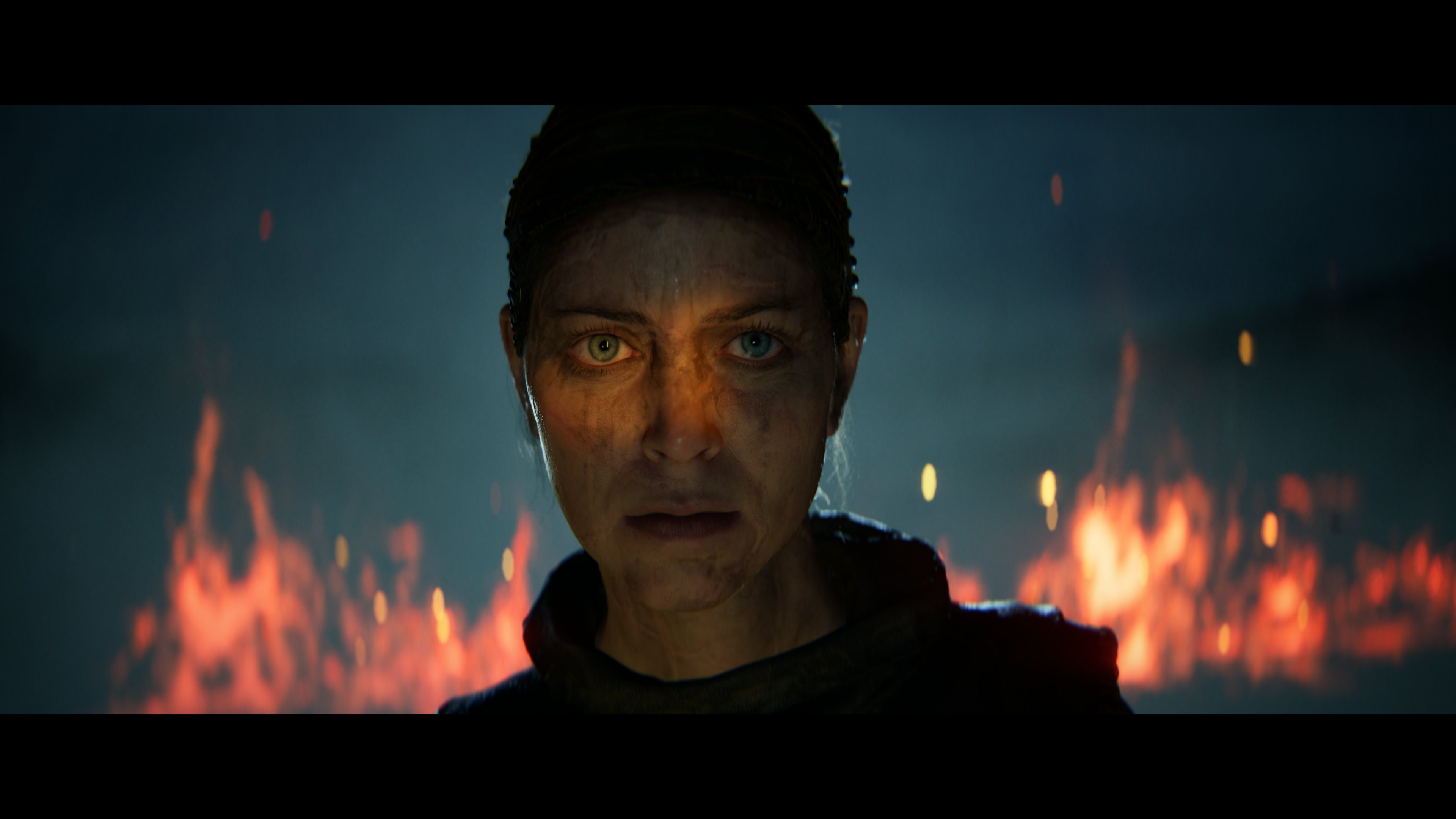
As I trudged through the muck of mangled bodies and derelict ships washed up on the shore, I sat across my screen with my eyebrows raised and a big smile on my face. Fighting tooth and nail through this moody, atmospheric Nordic twist on D-Day was both a riveting way to kick off a long-awaited sequel and the graphical showcase I’d been waiting for this entire console generation.
But as the hours wore on, I was disappointed to find that, as consistent as Senua’s Saga: Hellblade 2 is at impressing with its dazzling graphics and cinematic direction, I couldn’t say the same about actually playing it. Throughout its six to eight-hour runtime, I mostly just sort of trudged through the gameplay until the next expertly crafted story beat happened.
In a nutshell, Hellblade 2 is everything good and not so good about cinematic gaming. It’s overtly clear developer Ninja Theory focused on improving the tools by which it tells stories, and it's accomplished this objective tenfold. By the end of Senua’s saga, however, I was left wishing there was just a bit more meat on the bone of this gorgeous, meticulously prepared piece of mutton.
A New Gold Standard In Presentation

Hellblade 2 is a follow-up to 2017’s Hellblade: Senua’s Sacrifice. Set in 10th-century Iceland, this big-budget sequel seems to pick up not long after the conclusion of lead character Senua’s harrowing, introspective journey from the first game. After our heroine and her people fall into the clutches of seafaring, warmongering slavers from a foreign land, she breaks free and sets on a journey of revenge in hopes of putting an end to the atrocities once and for all.
Ninja Theory has a long history of crafting fun games elevated by incredible human performances. Its previous titles, like 2009’s criminally underrated Enslaved: Odyssey To The West and the 2007 PlayStation 3 exclusive Heavenly Sword, employed the talents of motion capture pioneer Andy Serkis. Hellblade 2 shows how adept the studio has become at translating the splendor of visual storytelling typically reserved for Hollywood productions to the medium of games.
Hellblade 2 is breathtaking. Its vast Icelandic landscapes are often indistinguishable from the real thing. Mountainous terrain and violent, overcast seas are mostly there for set dressing and creating a sense of scale, but it doesn’t make them any less jaw-dropping to behold. Smaller-scale levels (which tend to lean more towards the fantastical) are equally impressive. Hellblade 2 is easily the best showcase for Unreal Engine 5 so far and an exciting peek at what talented developers can do with Epic’s powerful creation tools.
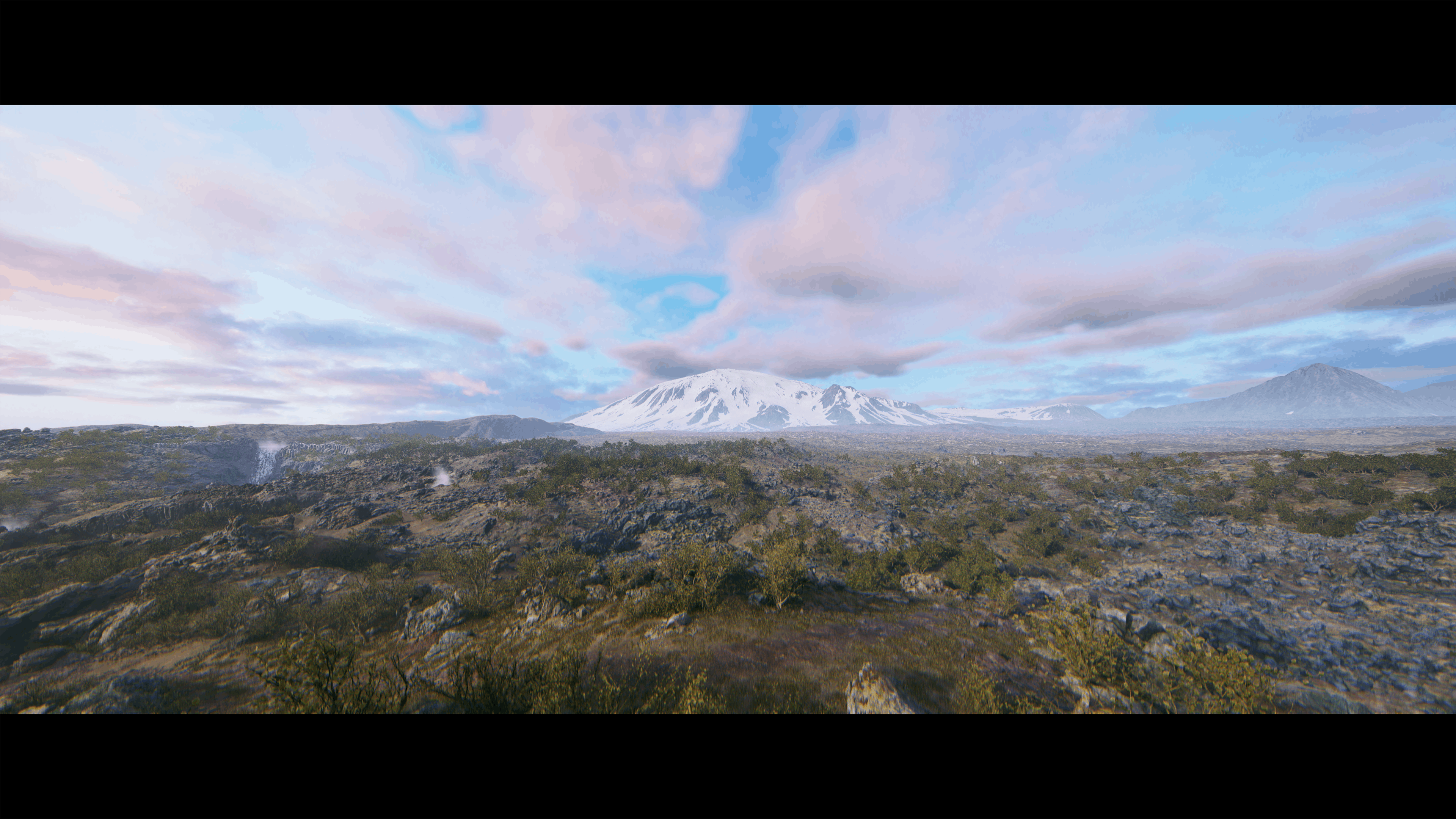
Hellblade 2’s gorgeous setting is impeccably brought to life by some of the most imaginative cinematography ever seen in a game. The camera sweeps across picturesque lands during transitional scenes and bigger story moments and perfectly replicates Senua’s fears, anxieties, personal victories, and emotional unrest during more intimate ones. The score, composed by David Garcia and experimental folk band Heilung, is an integral part of punctuating Hellblade’s epic peaks and emotional valleys.
And then there are the performances. Lead actress Melina Juergens brings all of the intensity that made Senua’s first outing so memorable, and her acting is only enhanced by six years of technological advancements in performance capture. Unlike the first game, Hellblade II isn’t a solitary affair. Juergens is joined by actors Gudmundur Thorvaldsson, Aldís Amah Hamilton, and Chris O’Reilly, who round out the game with a trio of arresting performances.
All Show, No Substance
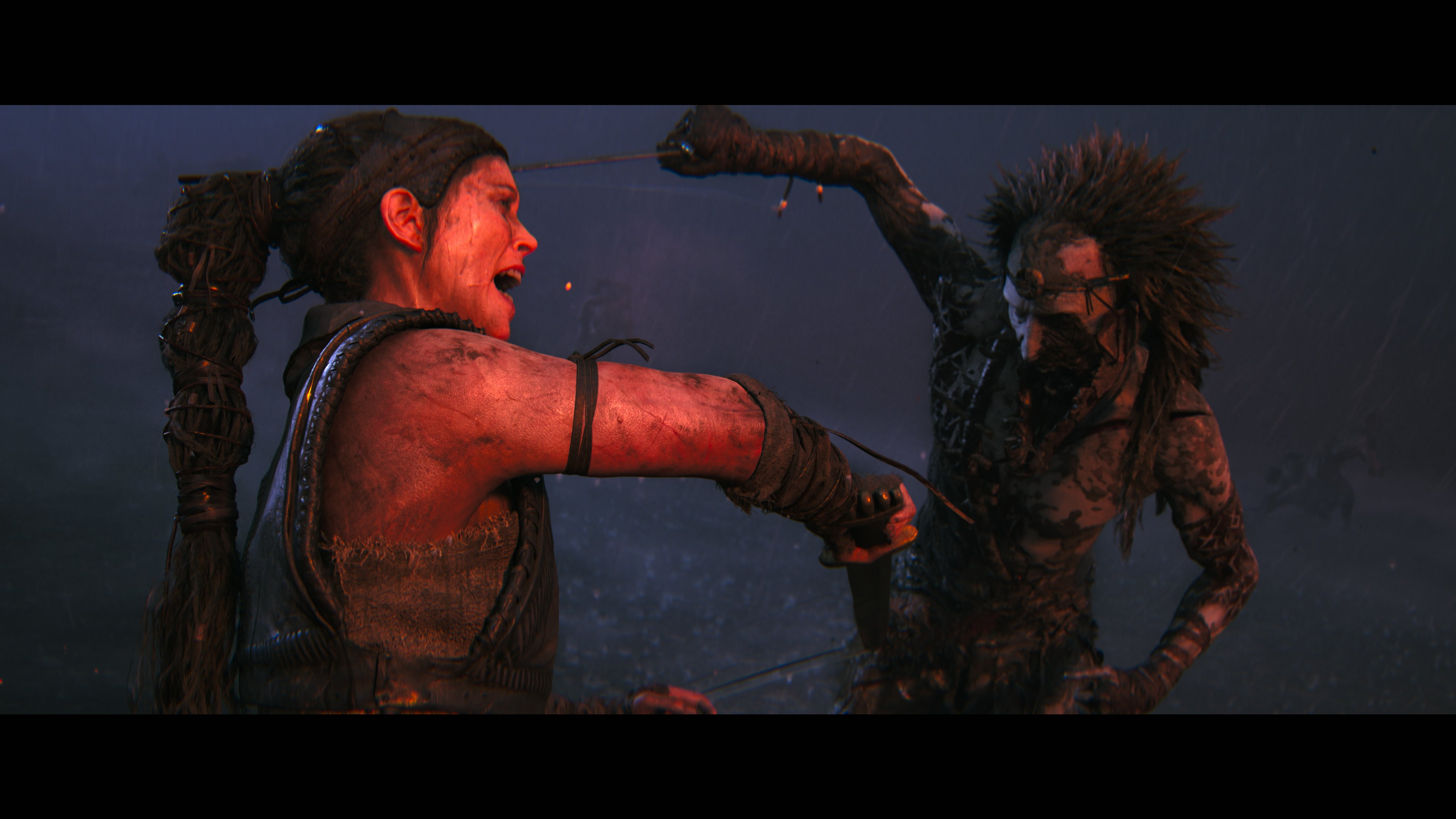
There are two essential elements to Hellblade 2 gameplay: puzzle-solving and combat. For better or for worse, the perspective puzzles from the first game are back. These sections task you with moving around the environment and positioning Senua’s perspective to recreate sigils and symbols she sees blocking her path using objects in the level. There seemed to be fewer of these puzzles in the sequel, but it doesn’t make them any less of a slog. Your mileage may vary depending on your opinion of these sections in the first game. But I hoped to see Ninja Theory find more creative ways of slowing down the player’s progress.
There are sections where players can alter parts of the levels to solve minor navigational puzzles, but these aren’t all that engaging either. Don’t expect any “ah ha!” moments that typically accompany great puzzle design.
It’s hard to believe this is the same developer behind games like the mechanically deep DMC: Devil May Cry (2012) or even Heavenly Sword.
Hellblade 2’s combat isn’t any better. Like the first game, Senua’s abilities are barebones, with a light attack, heavy attack, evade, block, and special slowdown ability at her disposal. Combat sections don’t ask much of the player, but I wish they did. It’s hard to believe this is the same developer behind games like the mechanically deep DMC: Devil May Cry (2012) or even Heavenly Sword, both of which are some of the best character action games of their respective decades. Here, combat is an unimaginative exchange of dodging attacks and dialing in combos at the right time. The combat looks great, as the camera gets up close to get you into the struggle and hits land with a satisfying thud. But these sections are rendered dull once enemies’ predictable attack patterns have been memorized.
Repetitive combat animations and the fact that you never fight more than one enemy at a time don’t help. That’s not to say one-on-one combat systems can’t be great. Games like Prince Of Persia (2008) and Super Punch-Out prove combat can be personal. It’s just that Hellblade 2 doesn’t do much to make it any more interesting than it was the first time around.
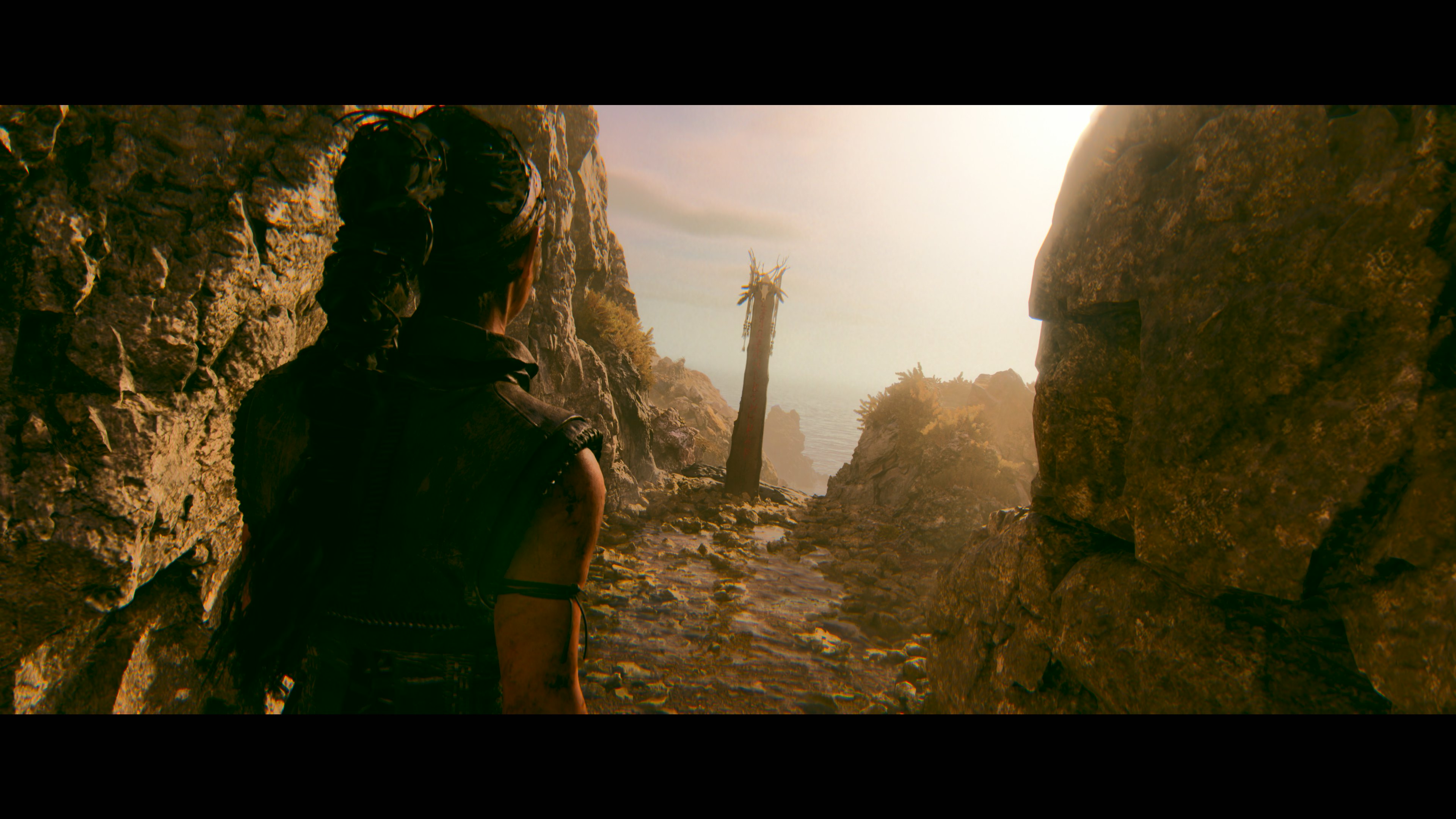
The understated, third pillar of Hellblade 2’s gameplay is walking. I don’t say this to sound cheeky: a good chunk of the game’s run time is spent holding forward to progress things happening on screen. There are entire subchapters where the only thing players do is slowly walk from point A to B to progress the story.
In a game lacking more traditional navigational challenges, like platforming sections, holding forward while you essentially watch a beautifully rendered real-time cutscene falls flat. I was always relieved when Hellblade 2 asked me to partake in the story rather than watch it. But when long stretches of inactivity are only broken up by underwhelming puzzles and rudimentary combat, it makes playing Hellblade 2 feel tedious.
A Saga Worth Seeing Through
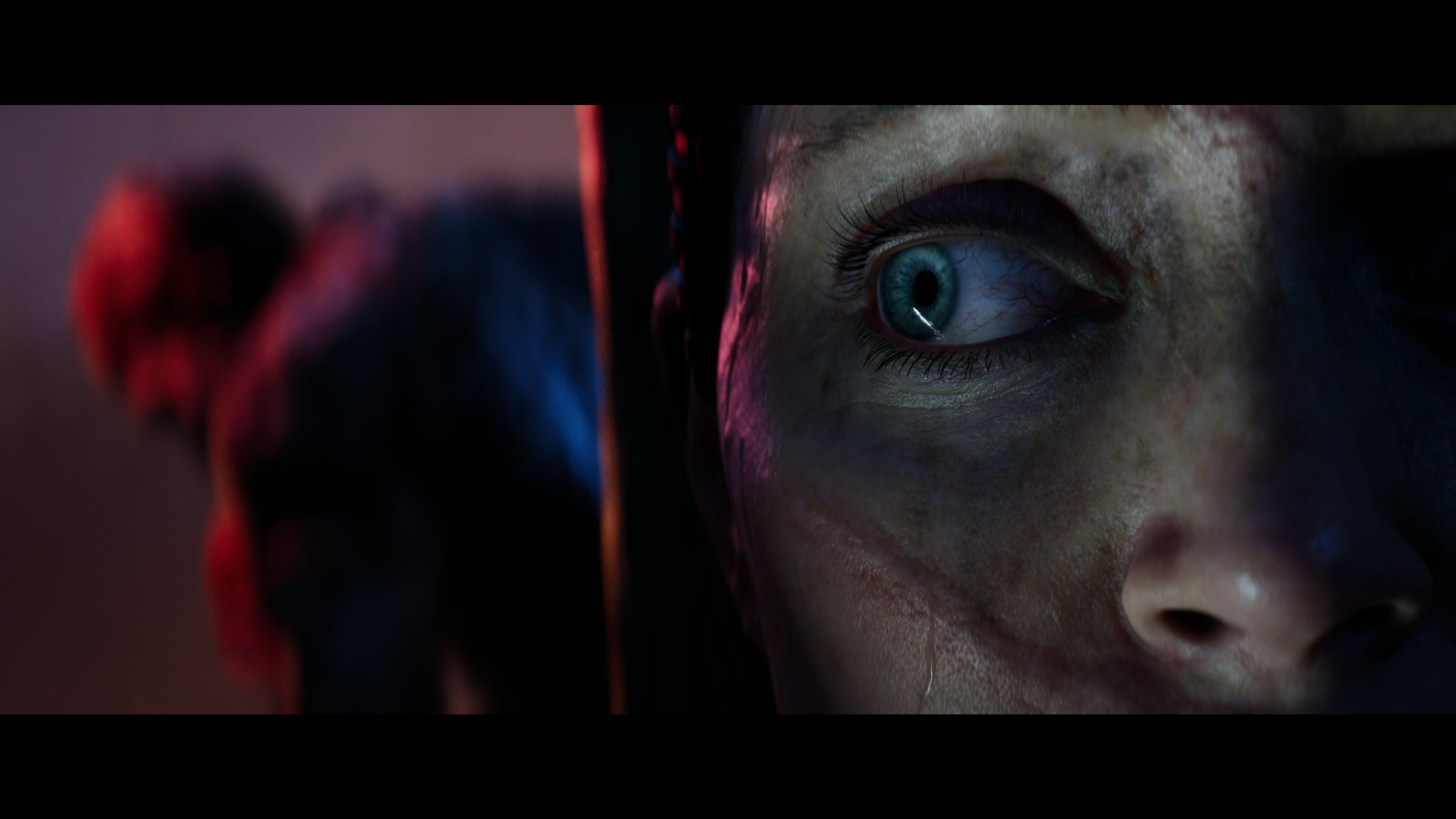
Hellblade 2’s saving grace is its story. The three main characters Senua meets on her journey are all really likable. Senua’s motivations are only strengthened as her Beowulf-like journey unravels. Beyond the halfway point of Hellblade 2, its story was the sole motivator for seeking out its conclusion. The emotional high points of the adventure and their adjoining elaborate set pieces are masterfully done, creating memorable moments that will likely stay in the player’s psyche long after they complete the game.
Speaking of the psyche, the narrative conceit of Senua’s psychosis continues in the sequel. The lead character and player are inundated with disembodied voices that interject Senua’s nagging thoughts and internal turmoil, a result of her deeply traumatic past. While Hellblade 2 doesn’t do anything the first game didn’t, this still proves to be an effective way to communicate Senua’s struggles and growth as a character. I am also grateful that Hellblade 2 is much kinder to its protagonist. I found myself cheering for Senua instead of simply feeling awful for her. That goes a long way in making me want to see this character again in the future.
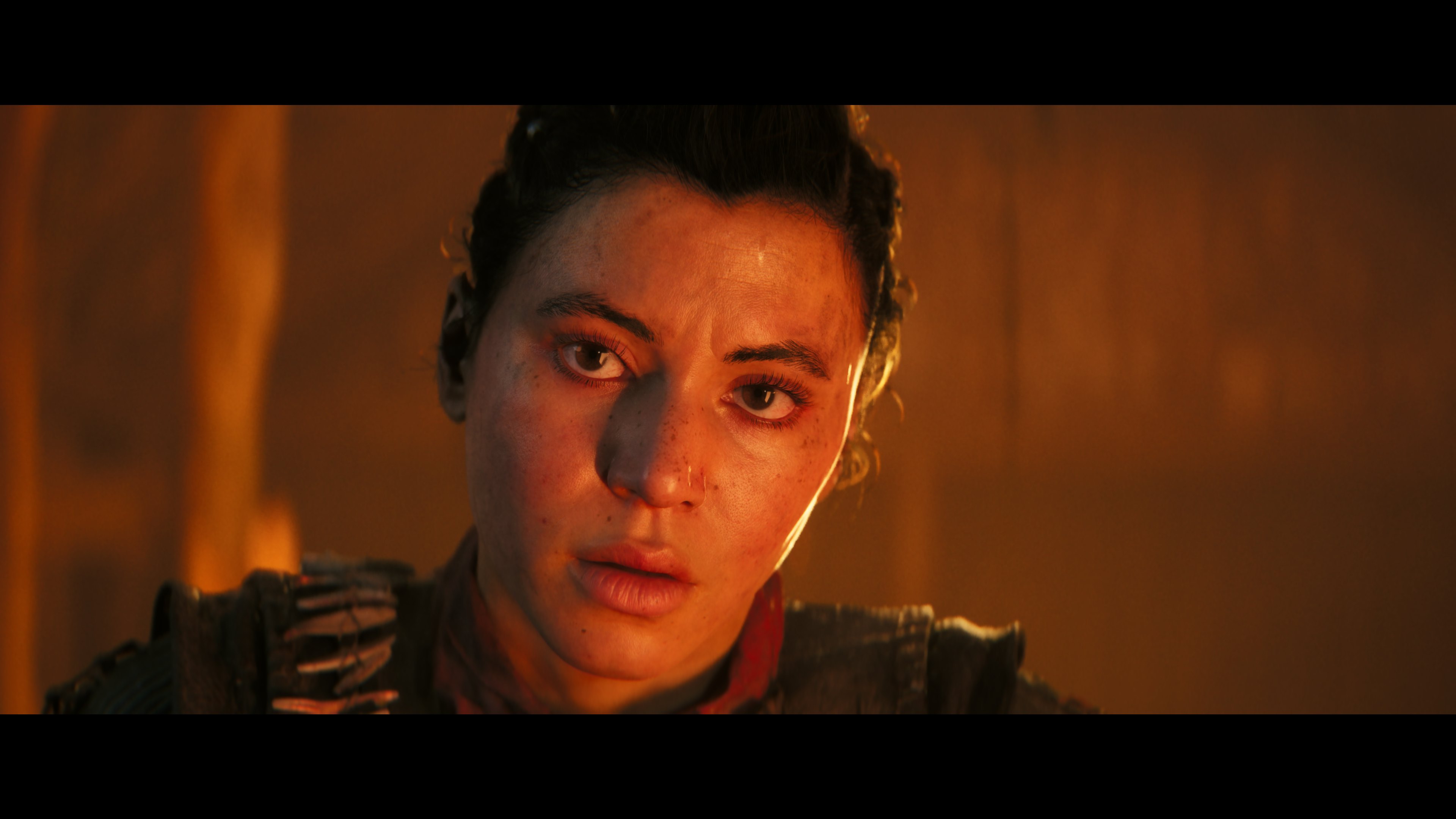
Lastly, Hellblade 2’s story makes the best of its length. What little there is to play never overstays its welcome or gets in the way of narrative. Whereas so many other AAA productions suffer this pitfall, Hellblade 2 is a superbly paced and lean title. For those worried about the value prospect of an eight-hour game, I believe Hellblade 2 justifies its short runtime with its production values and a genuinely satisfying tale of overcoming self-doubt, understanding those who have wronged you, and forgiveness. The fact that something this expensive is free for Game Pass subscribers is a steal.
Journey’s End

Hellblade 2 is a game made up of two disparate halves. On one side, there’s the beautifully crafted, country-spanning narrative brought to life by incredible visuals, inspired art direction, and cinematography. It is carried by an awesome cast who help realize the world of Senua in a way that lives up to Ninja Theory’s legacy.
At the same time, it’s a game that remains stagnant compared to its solid but simple predecessor. I was hopeful that this sequel would progress the ideas of Senua’s Sacrifice forward in more meaningful ways, but was left disappointed by how little things have changed since 2017.
Everything that makes Hellblade 2 special and worth checking out has nothing to do with video games. Like the first game, it's an impressive showcase of what the medium is capable of when a story, world-building, and human performances come together to create a wholly unique creative vision.
Regrettably, that vision is not nearly as fun to play as it is to look at.
6/10
Senua’s Saga: Hellblade 2 launches on May 21 for Xbox Series X|S and PC. Inverse reviewed the game on Xbox Series X.
INVERSE VIDEO GAME REVIEW ETHOS: Every Inverse video game review answers two questions: Is this game worth your time? Are you getting what you pay for? We have no tolerance for endless fetch quests, clunky mechanics, or bugs that dilute the experience. We care deeply about a game’s design, world-building, character arcs, and storytelling come together. Inverse will never punch down, but we aren’t afraid to punch up. We love magic and science-fiction in equal measure, and as much as we love experiencing rich stories and worlds through games, we won’t ignore the real-world context in which those games are made.







